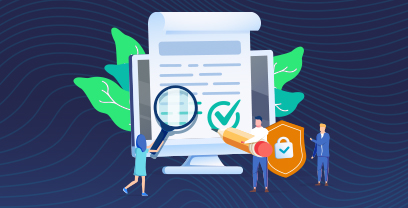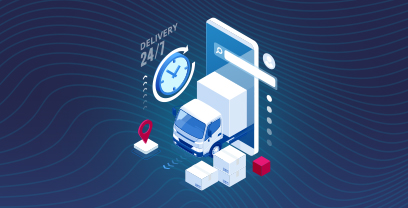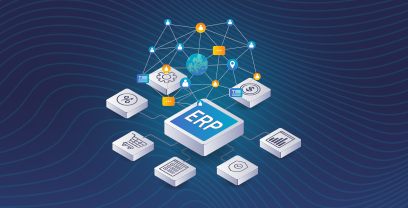Choosing the right procurement software is crucial for any business aiming to streamline its purchasing processes, control costs, reduce risk and improve efficiency.
With so many options available and competing objectives across the organization, it can be overwhelming for procurement teams to make the right choice.
This article will provide you with key insights, and all the do’s and don’ts for selecting the best procurement software for your organization.
The Importance of Procurement Software
Procurement departments often grapple with inconsistent data, manual processes, and poor visibility, which hinder effective decision-making and cost control. Managing supplier performance and compliance, along with ensuring collaboration, further complicate matters.
Advanced procurement technology addresses these challenges, empowering your teams to drive value, better manage risks, and achieve cost savings.
According to the 2024 Gartner® Magic Quadrant™, where Ivalua is named as a leader, « Source-to-pay suites allow organizations to manage all of their sourcing and procurement activities within a single integrated solution. ».
Digitizing and automating procurement processes through a comprehensive solution empowers your teams to unlock greater and more sustainable value throughout the Source-to-Pay process by reducing costs, improving supplier performance and compliance, and strengthening supplier relationships.
5 Things to Avoid When Choosing Your Procurement Software
When evaluating new procurement solutions, procurement teams must consider key factors such as organizational goals, current pain points, desired outcomes, and the need for process optimization.
This evaluation should encompass the three core categories: people, process, and technology. But what are the pitfalls to avoid when choosing the right solution?
Here are 5 crucial don’ts :
Don’t Underestimate the Importance of Data
A digitized Source-to-Pay (S2P) process should enhance transparency and support faster, more informed decision-making, but data quality is often overlooked.
According to Ardent Partners’ 2024 report, less than 10% of leaders consider data quality and architecture a top priority when selecting technology for procurement, even though poor data quality often hampers ROI.
Key considerations for procurement go beyond data quality, including data access, and data synchronization. Many organizations struggle with inconsistent supplier records due to disparate data tables, creating issues like duplicate or outdated information.
A unified data model as a single source of truth, where all supplier details are appended to a single record in real time, is ideal. Additionally, procurement teams must have access to all relevant data across the source-to-pay process, ensuring 360-degree visibility.
Bi-directional data synchronization across systems, including ERPs, is crucial for maintaining accuracy and reducing duplicate records. A truly integrated data model is essential for optimizing outcomes.
Don’t Neglect Internal Stakeholders
When picking the best procurement platform for your organization, it is important to identify and engage key stakeholders. These include sourcing, category managers, IT, accounts payable, legal, risk management, and casual users.
Make sure you are aware of all current processes, and pain points they face to prioritize areas for optimization before selecting a solution to support them.
As requirements and regulations vary across countries and regions, you have to consider the specific needs of different subsets or divisions within the organization as well, especially if your company operates globally.
A good procurement platform should have the ability to evolve with your business and be agile enough to easily adapt to changing requirements. Establish global standards but adapt to local needs.
Don’t Forget External Stakeholders
A multitude of suppliers to manage, across numerous categories and requirements with different delivery and payment terms – in today’s interconnected, global economy, supply chain management is complex and dynamic.
Many organizations today struggle with key aspects of supplier management, including supplier onboarding best practices, e-invoicing, and collaboration. Adoption of digital tools such as supplier portals, and automated workflows strengthens communication and collaboration.
The right procurement system offers optimal supplier onboarding and collaboration capabilities to ensure highest possible adoption and help you build stronger and more synergetic supplier relationships. At the same time, it should offer tools to measure and monitor supplier risk and supplier performance.
Don’t Choose a Solution only Based on its Features
This is a very important one! For a hefty investment such as a comprehensive procurement platform, you’d want to have a close look at the provider as well. Selecting the right provider will have a significant impact on the ultimate ROI of the project.
Procurement transformation is a continuous and long-term process and you and your provider will be in for the long haul, ideally. Therefore you should evaluate whether your and your partner’s company culture and values align. This is a point that can be easily overlooked when comparing platforms, features and pricing.
Also, does your provider have a roadmap for further innovation and development ? And does this roadmap align with your priorities ? And of course, consider the provider’s financial stability, reputation, quality of customer support/success, and customer retention rate.
In Short – Don’t Think Short-Term!
To ensure robust, long-term success, you need to think further than just the current issues and pain points to be solved. The best procurement software is only as good as its long-term ROI. To ensure said long-term ROI opt for a solution (and that means technology plus provider in this case !) that :
- Easily integrates with existing tech stack
- Is agile to adapt to changing requirements
- Ensures highest possible user and supplier adoption
- Comes with ongoing customer support, customer success management and an innovation roadmap
Once you have established your objectives and a clear vision of your procurement transformation project, buyer guides or industry reports such as or the 2024 Gartner® Magic Quadrant, can help make informed decisions. So can detailed product demos.
Ready to learn more? Watch a demo of our Source-to-Pay platform.
How do I Successfully Implement a Comprehensive Procurement Software?
Procurement management software can be rolled out in stages either starting with a pilot phase, to test the new tool in select departments or regions to gather feedback, and identify potential issues before full deployment. Or you can also choose to opt for full deployment right away, rolling out the platform organization-wide.
Successfully implementing procurement software across an organization can be daunting. To ensure maximum user buy-in, communicating the rationale behind the new technology, how it aligns with company goals early on, and addressing employee concerns is important.
Emphasize the opportunities for growth and skill development, and incentivize adoption by incorporating this requirement into annual objectives. To facilitate adoption across your organization, your S2P software should come with an intuitive interface and easy-to-use features while your solution provider should offer training sessions, workshops and customer support.
Conclusion: All You Need to Know to Future-Proof your Procurement
Choosing the right procurement software isn’t just about features; it’s about building a long-term partnership with your suppliers based on shared values and continuous improvement. The real value of a complete Source-to-Pay software lies in bridging strategic sourcing and operational procurement, unlocking agility, collaboration, and cost savings.
A comprehensive Source-to-Pay (S2P) platform can transform an organization by optimizing costs, processes, visibility and compliance. Beyond these benefits, it can reshape spend management and give procurement a competitive edge.
Ultimately, a well-chosen procurement solution bridges strategic sourcing and operational procurement, driving agility, collaboration, and cost savings.
In our comprehensive Source-to-Pay Technology Buyer’s Guide, you will find proven strategies and a comprehensive checklist of what to consider before initiating a S2P transformation project.




